Convious Crowd Control
Are you worried about how to reopen in the foreseeable future? Crowds and rows will be
unacceptable due to health risks and regulations. Fines or even closure will be the consequence
as your current systems are not made to solve these problems properly.
“With years of experience in managing visitor spread, Convious Crowd Control now comes with specific features to help leisure venues keep on selling tickets and generating revenue, while ensuring safety for their employees and visitors by preventing overcrowded scenarios.” – Camiel Kraan, CEO at Convious.
To reopen, safe and predictable spread of visitors is now a necessity for the leisure industry. You need to prepare responsibly for visitors to come and enjoy a safe experience.
With Convious Crowd Control you can prevent unplanned and unsafe surprises straight from the start of the customer journey.
- Manage visitors spread by using our smart algorithms to ensure safe spread over hours, days, and months to prevent overcrowding.
- Gain insights into your visitors, by seeing how many visitors are expected, and adapt capacity and staffing based on crowd predictions.
- Move purchases online, encouraging upfront buys as much as possible via contactless payments.
- Use advanced tools are available to communicate to your visitors at orientation, before, during, and after their visit.
About the pricing models used in this White Paper
Name Your Own price (NYOP):
Name Your Own Price, or NYOP is an advanced online pricing strategy where venues give their online visitors and customers the ability to place a bid on the product or service they want to purchase. The venue accepts or declines the offer based on a range of prices previously established. If the price is accepted, an online transaction is made, creating a “win-win” situation: the customer pays what he feels like paying, and the venue makes a new online sale.
Real-Time-Pricing:
Real-Time Pricing prices, based on our data-driven AI-algorithms, use factors such as weather, seasonality, inventory, and historical data to determine the best prices automatically and in real-time.
In every case, Real-Time Pricing solves the flat price problem and allows our partners to integrate various external factors into their pricing approach. Find out more about Real-Time pricing here.
Case 1 : Shifting visitor distribution from peak days/hours to slower days/hours
The Venue
With 4 venues over the country, this partner is the leading zipline park in the Netherlands. In 2019 this partner sold almost 59.000 tickets, hosting great adventures for families, friends, and company teams across the country.
The Challenge
When the partnership between this park and Convious was created in October 2018, Name Your Own Price (NYOP) was chosen as the primary pricing approach. Although this was a success, with time, our partner encountered business challenges that NYOP could not entirely tackle. Particular visitor patterns brought by peak-days and -hours, and the contrary, led to an uneven visitor distribution.
If visitor distribution is not balanced enough it leads to highly crowded scenarios, and unmet demand often resulting in dissatisfaction, while disregarding and missing out on other opportunities for both: the customer as well as the venue.
Thus, the main goals was to shift the visitor distribution from peak days/hours to slower days/hours.
The Approach:
Looking at the challenge, and the market, we recommended testing Real-Time Pricing to tackle this. In early 2019 this climbing park was among the first to adopt our dynamic pricing algorithm.
By implementing the Real-Time Pricing model, the ticket prices were adjusted in accordance to the factors affecting visitors spread (demand, availability, weather, traffic, seasonality, etc.). This way Real-Time Pricing approaches visitor spread more proactively by steering behavior through prices, and subsequently sales.
The new pricing model’s impact was measured by comparing it to their more static approach before using Convious. To do this, we conducted a year on year comparison of the online bookings during the months April till September 2018 and 2019, excluding holidays.
The Results:
When comparing weekdays, it is visible that the visitor distribution changed when Convious implemented Real-Time Pricing.
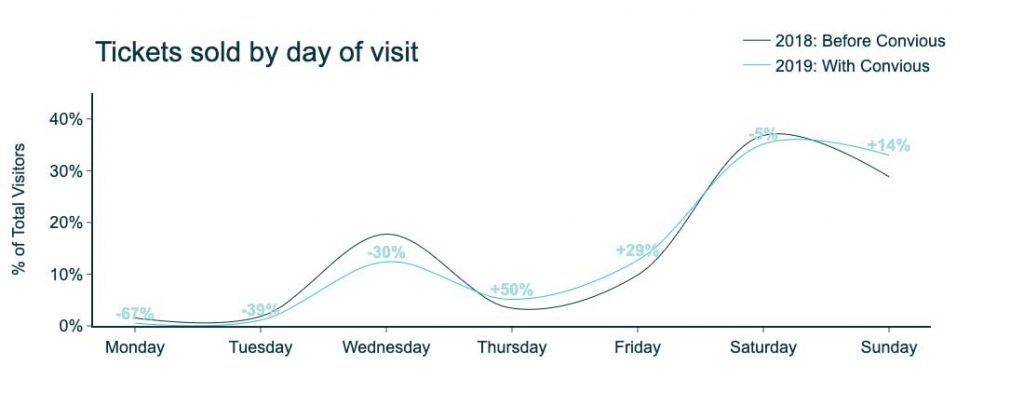
As shown above, this venue started having more visitors on Sundays (+14%), Fridays (+29%), and Thursdays (+50%) while having fewer visitors on the regular peak-days, Wednesday (- 30%), and Saturdays (-5%).
However, changing the distribution throughout the days of the week was not the only change this venue experienced.
The comparison below illustrates how the hourly spread was too, clearly affected.

On regular weekdays, we see that with Convious’ Real-Time Pricing, visitor spread shifted heavily from the 1 PM time slots with -29% of visitors to the morning hours (10-12 AM) with +54%, +134% and +12%, as well as the afternoon (4 PM) with +78%.
At the same time, these slots generally became more popular. As the growth of the morning hours exceeds the number of visitors shifting from the peak slots.
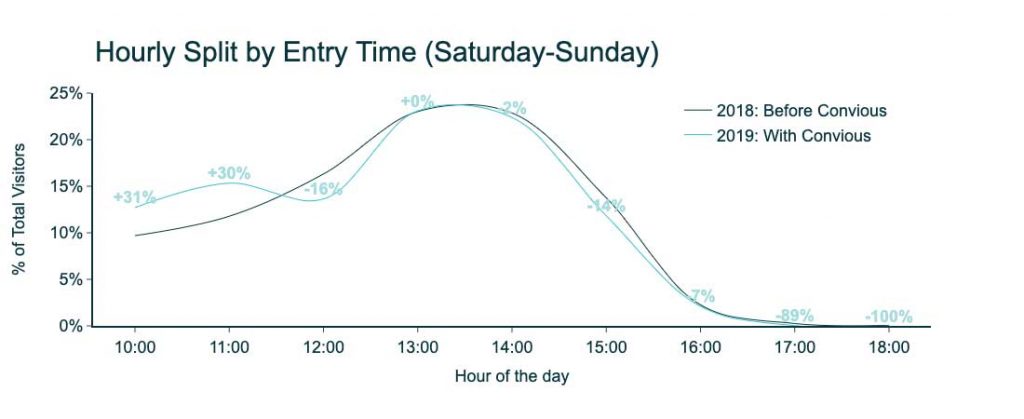
On weekends (Saturday-Sunday), with Convious, visitors spread not only shifted from noon (12 AM) with -16% to the earlier morning hours (10/11 AM) but that the morning hours also, again, got overall more popular.
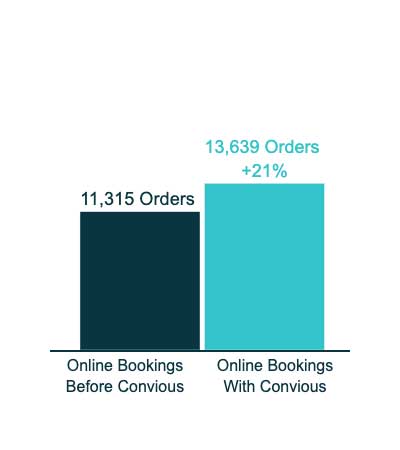
Meanwhile, the rising popularity paid off as the number of online bookings within this time frame shows a +21% increase and an overall 9% increase in revenue was accounted for as well.
The Bottom Line
✓ Shift visitor distribution from peak days/hours to slower days/hours.
● Up to 30% fewer visitors on peak days
● Up to 50% more visitors on slow days
● On average 17% fewer visitors during peak hours
● On average 50% more visitors during slow hours|
Real-Time Pricing allowed more consistent visitor spread throughout the days and hours, steering visitors away from peak days and hours and making slower time slots busier, while also contributing to an increased number of online orders and therefore increasing revenue.
Case 2 : Discovering which factors affect visitor distribution and encouraging even visitor distribution patterns
The Venue
This Dutch museum attraction offers family-friendly activities with over 500 unique exhibits and artifacts, creating an unforgettable visitor experience. From March 2019 until March 2020 this partner sold more than 15.000 tickets online.
The Challenge:
As many venues, this venue was also struggling with uneven and unpredictable visitor distribution. Thus, they needed to discover which factors affect their visitor distribution and find a way to encourage even visitor distribution patterns.
The Approach
Each venue has certain key characteristics; thus although two venues might face the same problem, the factors contributing to this problem are very different. Looking at existing data, we discovered this venue’s visitor spread seemed to be heavily influenced by several environmental factors such as weather, temperature, and seasonal holidays.
Hence, we used the historical data at hand to build a forecasting model based on these known influencing factors, providing insights into expected sales for the future. Then, to re-distribute visitor flow, we aligned the prices accordingly by using dynamic pricing. The aim was to override the influence of environmental factors by adjusting the price. To see how influential these price adjustments really are over a period of time, we compared the original online checkout with the old pricing model, to the Convious’ AI-powered checkout based on dynamic pricing by running both simultaneously.
The Results
With the Convious Checkout, almost immediate changes were visible in the number of orders, or visitors, per day.
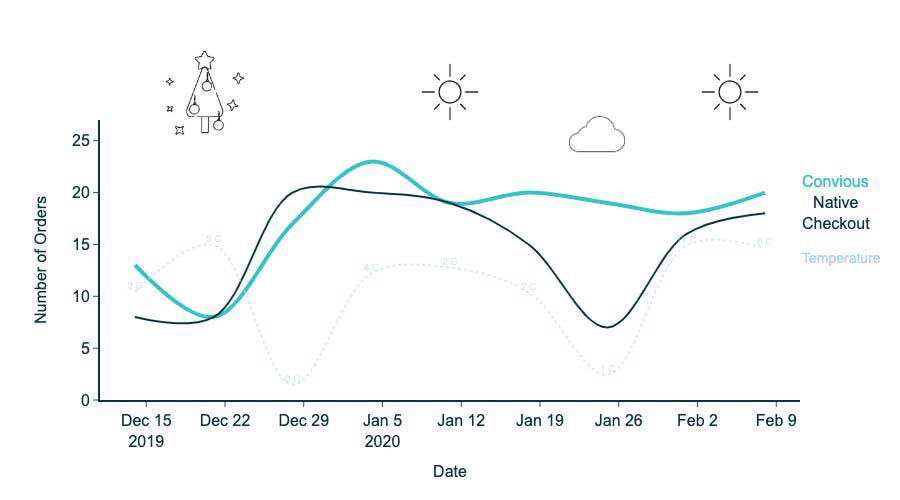
The results show how the Convious checkout, compared to the native checkout, led to an overall more even visitor distribution despite environmental influences such as weather and drops in temperature (e.g., January 26th).
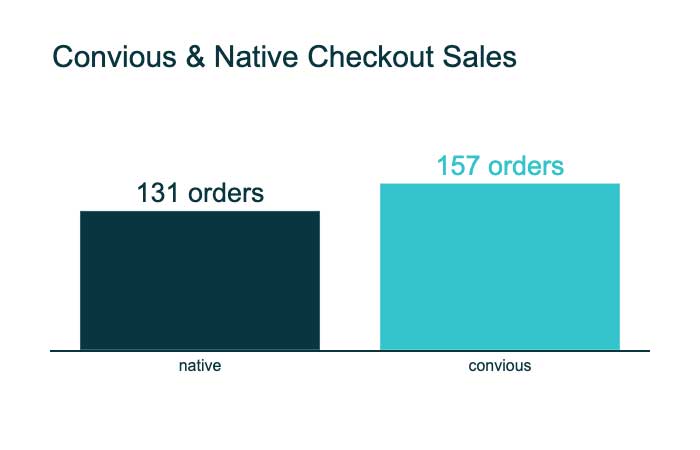
Meanwhile, the number of orders showcase an increase of +19,8% of total sales for the given time frame.
The bottom line
✓ Discover which factors affect their visitor distribution.
✓ Encouraging more even visitor patterns.
● The adjusted prices allowed the museum to steer visitors to days that would usually have experienced a drastic drop in sales.
● Dynamic pricing was the driver to visitor spread but also to more overall orders.
Dynamic pricing, however, has a vast range of capabilities, and Case 3 shows how this partner used more of the now reachable opportunities for their success.
Case 3 : Encouraging more consistent and predictable purchase behavior
The Venue
This Dutch museum attraction offers family-friendly activities with over 500 unique exhibits and artifacts, creating an unforgettable visitor experience. From March 2019 until March 2020, this partner sold more than 15.000 tickets.
The Challenge
Next to achieving improved visitor spread, this museum had another challenge to tackle. Looking at the existing data from the native checkout, customers of this venue seemed to practice extremely unpredictable purchase behavior, making it difficult to estimate expected numbers. Thus, they needed to encourage more consistent and predictable purchase behavior.
The approach
Here as well, we used the existing data to build a purchasing behavior model and used the insights to align the prices with dynamic pricing and steer more predictable purchase numbers as a result. First, we defined the expected or usual sales numbers based on the average ticket sales and decided everything below 70% or above 140% of this average would be counted as unexpected sales. Then we ran both checkouts, the native, static, and unchanged checkout, as well as Convious’ dynamic pricing checkout simultaneously, or parallel, over a period of 38 days to measure the exact impact of each.
The Results
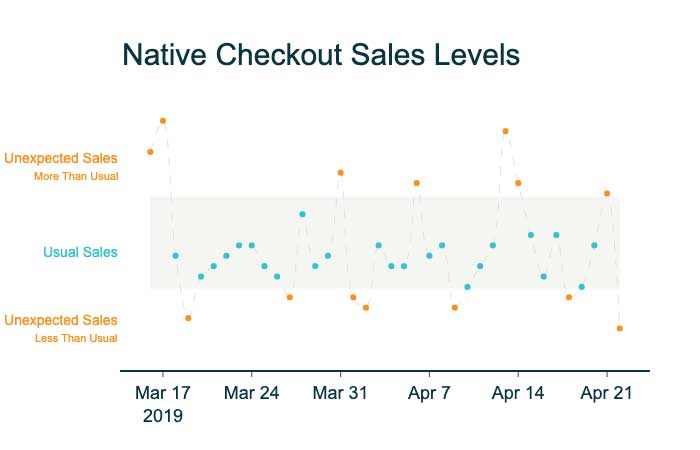
The native checkout clearly shows more outliers (orange), more unexpected, and unpredictable sales.
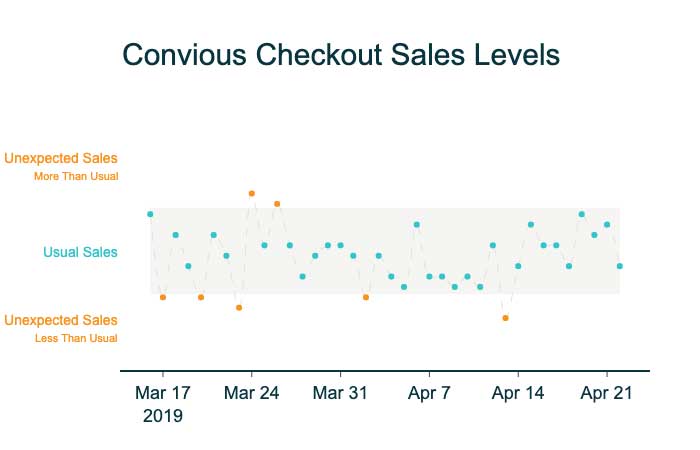
The Convious checkout, on the other hand, shows fewer outliers, as most days are either within the usual sales (turquoise) quadrant or in extreme proximity to it.
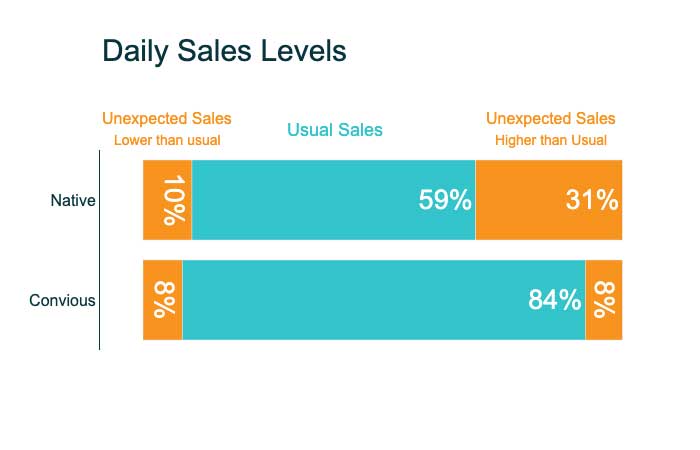
More precisely, the sales levels show that 84% of the sales done through the Convious checkout lay within the usual sales numbers, whereas the native checkout has only 59% within this predictable range.
The bottom line
✓ Encourage more consistent and predictable purchase behavior.
● -28% of unexpected sales.
● Total of 84% of sales within the usual frame.
Both cases, coming with unique challenges of this partner, were solved by using dynamic pricing.
Not only was visitor spread improved, but with the side effect of also gaining 19,8% more visitors, so was visitor behavior made more predictable and manageable, leaving our partner to harvest the benefits.
Visitor distribution gives, most importantly, the power to enforce particular safety measures at a venue, while seizing maximum opportunities to each time slot.
Additionally, the profound insights into expected visitor numbers allow these venues to prepare accordingly – if this is for safety, special offers, financial planning, staffing, or simply to maximize ticket sales.










